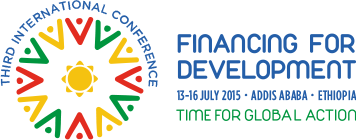by Biplabi Shrestha
8 July 2015
The United Nations is currently debating the shape and content of the new Sustainable Development Goals (SDGs), and the means of financing these ambitious aims.. Discussions on financing the goal of eliminating gender inequality, however, are ignoring what may be the most critical aspect: women’s need for comprehensive sexual and reproductive health and rights (SRHR).
The Financing for Development discussions taking place in Addis Ababa this month will decide support for the SDGs through an intergovernmental negotiated process. While it is commendable that the discussion has gone beyond economic development to include social development, the new framework cannot be strong and effective without recognizing the need of ensuring SRHR for all.
Sexual and reproductive health and rights are fundamental human rights. ARROW’s work in the Asia-Pacific region finds that SRHR are critical for ensuring full, satisfying, healthy and productive lives and physical and mental well-being for all. SRHR include ending gender-based violence and harmful practices such as early, forced and child marriage and female genital cutting. For young people, lack of access to information about their bodies and their growing sexuality leads to poor health outcomes.
SRHR have a direct impact on economic growth and development. Girls and women have a greater chance for higher education by choosing to delay marriage and pregnancy. This provides better opportunities for better jobs, and the whole community benefits. Sexual and reproductive rights are critical if the new development agenda is to ‘leave no one behind.”
Yet, SRHR have repeatedly been left out of Financing for Development discussions. Even the inclusion of gender equality has been debated. Opponents argue that the subject is already covered in the proposed Sustainable Development Goals. But the lack of specific funding for SRHR was a main reason that the Millennium Development Goals failed to meet their targets for girls and women.
Systemic issues such as inequality under law, social marginalization and lack of sexual and reproductive health care are the biggest barriers to any country’s development. One key solution is gender-responsive budgeting, which should become the norm worldwide.
The primary source of funding for healthcare services, including sexual and reproductive health, should be public health budgets, not private sector resources. Business and the private sector now feature prominently in current discussions, but ARROW’s research has shown that privatization, especially in the health sector, has led to greater out-of-pocket expenses for health services, not to savings. In Pakistan, studies of privatized health service delivery, management and capacity-building functions found that it did not deliver quality services and restricted access to services, especially for the poor and the marginalized.
Our governments and international development actors should not shy away from their primary responsibility of peoples’ well-being and overall development. The private sector should be welcomed only to complement public support, not to replace it. In the health sector, when the private sector is mandated with supporting public health care needs, it needs to uphold international quality of care standards and provide the full range of sexual and reproductive health services. Examples from countries such as Australia and Singapore have shown that depending on the context and economic strengths, a mixed funding approach can also be beneficial.
To ensure that the private sector functions within international human rights principles, governments should establish a regulatory framework and accountability mechanisms that are responsive to variables in age, income status, disability, migratory status, and are gender-responsive. Regulations should also apply to international and private for-profit players to ensure that their work helps eliminate inequities.
We cannot afford to repeat the earlier mistake of failure to recognize SRHR as critical in the financing framework. Sexual and reproductive health and rights cut across all development areas and must therefore be fully included, addressed and financed.

